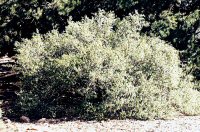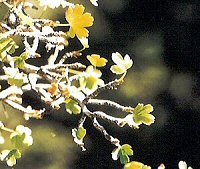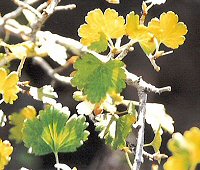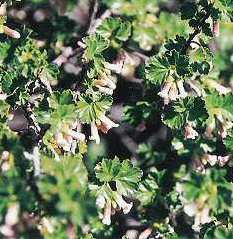WAX CURRANT
Saxifrage Family
Ribes cereum

Wax Currant is in the same genus as the Gooseberry (very closely related). Both are present at the South Rim of Grand Canyon. The most obvious difference is that gooseberry stems have sharp spines and wax currant does not. Another difference is in habitat preference: gooseberry prefers the shady north-facing slopes of the upper Canyon along the trails, while wax currant is more common along the rim itself. The plant grows to 6 feet tall and 8 feet wide.


Wax currant leaves, such as those on the left, are shallowly divided into 3 to 5 lobes. Gooseberry leaves, at right, are more strongly separated into 3 deeply-divided lobes.

Wax currant flowers are tubular and hanging, about ¾ inches long. They are white or pink. The fruits are bright red and edible, but taste rather bland. Both the fruits and the leaves were used by Indians to make pemmican, a "trail mix" using animal fat and various plant materials.